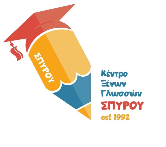The Extensive Reading approach was first launched by Harold Palmer and Michael West.
What is extensive reading? Where does it take place?
Extensive reading is the act of reading texts as in books, graded readers, comic books e.t.c. in sessions varied from 20 minutes to 1-hour long in order to ensure that everyone gets to read as much as possible in a relaxing and of course quiet setting. This can take place inside or outside the classroom.
To get an idea of how we have incorporated an extensive reading activity into our lessons, our Readathon event is a good example!
Why extensive reading?
Researchers highly recommend extensive reading programmes since they make language learning more effective.
The aim of extensive reading activities is enjoyment! Engaging students in the actual act of reading authentic or adapted books and graded readers that diverge from the type and style of coursebooks used in an English language class presupposes that the material must appeal to the learners. That is why students should be responsible for selecting their texts by themselves.
When all students are motivated to read, the gains are immense!
According to researchers, extensive reading allows students to:
- become fluent and confident readers
- improve their reading speed and skills (skimming, scanning)
- boost their vocabulary
- develop a liking for reading and
- build good reading habits
The materials & the Self-Selection Process
The materials must be comprehensible and interesting to the readers! The use of dictionaries must not be extensive and the types of reading texts can vary from graded readers to comic books, magazines etc. With some guidance from the teacher, the selection process is led by the learners themselves. To put it simply; as long as they like it, they read it!

The Principles of an Effective Extensive Reading Program…
An effective extensive reading program must be: pleasurable, uninterrupted, stress-free, independent, fast-paced, silent and of course performed on a regular basis. Testing and follow-up activities are excluded! In case students lose interest, the process stops and they choose an alternative book.
This approach aims at drawing on students’ intrinsic motivation, which is the most powerful kind of motivation. Students’ driving force for reading does not emerge from a tangible reward. Instead, their will to read comes from within.
“We learn to read by reading”.
Paulson and Bruder
REFERENCES
BENETTAYEB – OUAHIANI, A. (2015). EXTENSIVE READING IN THE EFL CLASSROOM: AN APPROACH TO READING AND VOCABULARY INSTRUCTION (Ph.D). BAKR BELKAID UNIVERSITY OF TLEMCEN.


